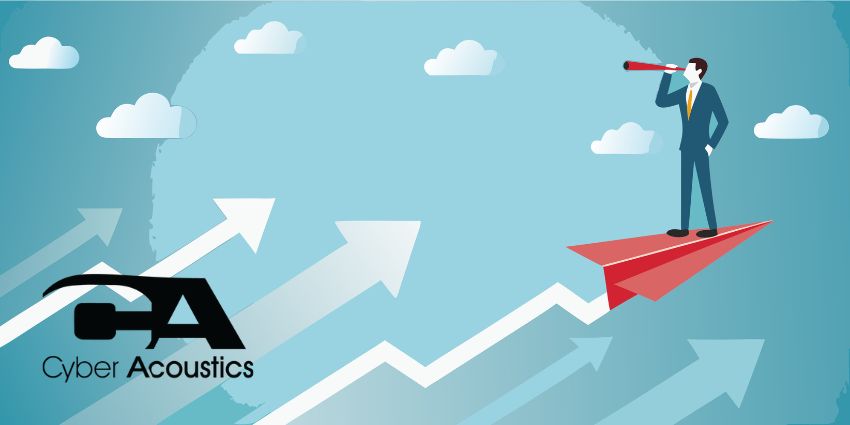The term “Helpdesk” is a pretty common one in today’s digital world, but not everyone can answer the question: “what is helpdesk software?”
A helpdesk is a critical tool in the new age of “total experience”, in which companies need to consider how they can improve the experiences given to their customers, employees, and agents. Let’s try and break the concept down a little further.
Have you ever had a problem connecting to your company’s VPN when working from home or struggled to troubleshoot a bug in a tool you’ve purchased? When issues like these happen, we all want to get support and guidance as quickly as possible. A helpdesk is one of the tools that companies can use to eliminate issues quickly and improve customer experience.
While helpdesk technology might not be a particularly new concept, it’s still one of the most valuable components in ensuring a smooth-running business landscape.
What is a Helpdesk? The Basics
A helpdesk is a tactical environment within a business, offering support for various troubleshooting and problem resolution strategies. Helpdesk environments can serve both employees and customers with access to software for troubleshooting, tracking incidents, and issuing service requests.
The exact functionality of a helpdesk will depend on several factors. Most commonly, the technology is used for CX to ensure customers get the support they need.
No matter what kind of business you run, you likely have multiple people in your team connecting with clients on a daily basis. In today’s omnichannel environment, this can involve combining conversations across a range of platforms, from chat systems to video streaming services.
Helpdesk systems bring multiple conversations into one place, allowing them to be cross-referenced for more context in the customer experience. It also allows for the use of features like categorisation and automation to help keep track of and improve customer conversations.
How Does a Helpdesk Work?
Definitions of the helpdesk can differ depending on who you ask. Over the years, innovations in IT service management technology, and access to new software has caused some confusion in this area. Many businesses have even developed their own definition of what a helpdesk should be.
Usually, however, helpdesks are central environments for IT support. They serve both customers and employees in need of technical support. Some solutions can also integrate with additional software for customer support and service. Helpdesk components might include:
- A reliable ticketing and ticket management system
- Omni-channel integrations with various platforms
- An effective issue tracking service
- Self-service elements like knowledge bases and chatbots
- Analytics and troubleshooting tools
- Customer feedback options
- Canned responses and automated responses
- Automated workflows and notifications
- Contextual collaboration tools
Crucially, a helpdesk isn’t the same as a service desk. A service desk is a broader, all-encompassing solution for IT troubleshooting, ticketing, and service management. Usually, a helpdesk will be included as part of a service desk environment. While helpdesks focus on fixing and troubleshooting IT issues, service desks empower teams to build strategic approaches to problem management, SLA control, and service.
Why is the Helpdesk Important?
A helpdesk can be a valuable addition to any business, no matter the size or industry. If you need to answer customer or employee questions quickly, without hiring hundreds of support reps, helpdesks are often a must-have investment. They can:
- Unify all of your channels into one place: Even if you don’t currently have too many channels to keep track of in your contact centre, you’re likely to have more platforms to manage going forward. Increasingly, customers are looking for support across several channels convenient to their needs. Your helpdesk will help to ensure you can keep track of a customer’s request for service regardless of where they contact you.
- Improve customer satisfaction: Helpdesks support happier customers by giving them a quick and simple way to resolve their problems. There are even tools that allow you to implement self-service solutions. According to Zendesk, 60% of customers believe getting a quick solution to a problem is a crucial factor in deciding who they want to work with. If your helpdesk offers self-service solutions, this can further improve your customer’s perception of your brand, by allowing them to take a “DIY” approach whenever they choose.
- Improve management: In an increasingly complex workplace, where team members are working both remotely, and in hybrid environments, a helpdesk can help you to keep track of your support agents. Unifying various customer support tracks makes it easier for management to ensure everyone on your team is on the right track. You can even use the performance of your agents to benchmark and set future goals.
- Enhance employee satisfaction: Helpdesk environments can make life easier for employees too. With an all-in-one environment for serving customers, it’s much easier to deliver a high quality of service. You can even integrate your help desk with your CRM system and other tools to make it more effective at providing employees with contextual knowledge. Gartner says that two-thirds of employees believe that unnecessary complexity stops their customers from scaling. Helpdesks make finding the right solutions to issues quick and simple
- Teach you about your audience: Tagging and analytical tools built into helpdesks allow you to learn more about what your customers care about. With help desks, you can gain a better view of what the needs and wants of your target audience are. This is the best way to ensure you’re making the right decisions for the future of your business.
- Enhanced scalability: It’s hard for a company to grow and scale when it’s constantly investing all of its budget into IT support and guidance. With a helpdesk, problems can be solved faster, more efficiently, and cost-effectively. You can even add automation elements like automatic notifications sent to managers when they need to follow up on a customer service task. This helps to keep your entire team running smoothly.
Helpdesks Make Your Team More Productive
Helpdesks make teams more productive and customers happier overall. Customers will always need help from your company, whether it’s deciding what kind of service they want to use or getting assistance with setting up some new technology they want to buy from your brand. With a help desk, you can even implement automation elements to make your business more efficient and reduce the amount of time customers spend on wasteful tasks.







